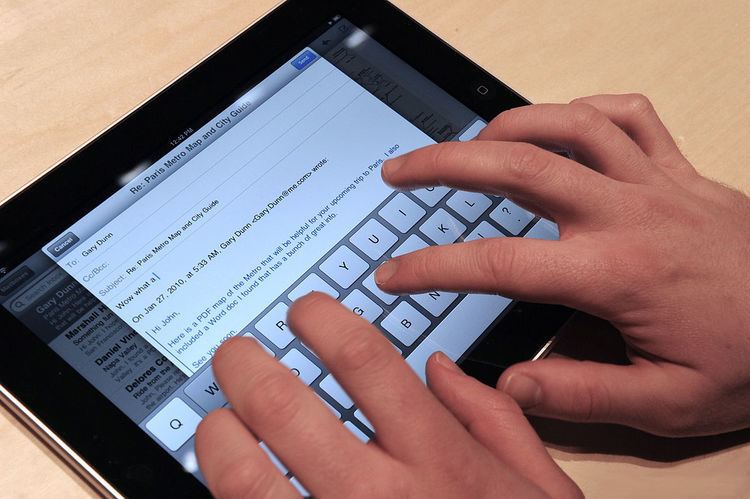 | ||
A virtual keyboard is a software component that allows a user to enter characters. A virtual keyboard can usually be operated with multiple input devices, which may include a touchscreen, an actual computer keyboard and a computer mouse.
Contents
Types
On a desktop computer, a virtual keyboard might provide an alternative input mechanism for users with disabilities who cannot use a conventional keyboard, or for bi- or multi-lingual users who switch frequently between different character sets or alphabets, which may be confusing over time. Although hardware keyboards are available with dual keyboard layouts (e.g. Cyrillic/Latin letters in various national layouts), the on-screen keyboard provides a handy substitute while working at different stations or on laptops, which seldom come with dual layouts.
Virtual keyboards are commonly used as an on-screen input method in devices with no physical keyboard, where there is no room for one, such as a pocket computer, personal digital assistant (PDA), tablet computer or touchscreen-equipped mobile phone. Text is commonly inputted either by tapping a virtual keyboard or finger-tracing. Virtual keyboards are also used as features of emulation software for systems that have fewer buttons than a computer keyboard would have.
Virtual keyboards can be categorized by the following aspects:
An optical virtual keyboard was invented and patented by IBM engineers in 2008. It optically detects and analyses human hand and finger motions and interprets them as operations on a physically non-existent input device like a surface having painted keys. In that way it allows to emulate unlimited types of manually operated input devices such as a mouse or keyboard. All mechanical input units can be replaced by such virtual devices, optimized for the current application and for the user's physiology maintaining speed, simplicity and unambiguity of manual data input.
On the Internet, various JavaScript virtual keyboards have been created, allowing users to type their own languages on foreign keyboards, particularly in Internet cafes. Multitouch screens allow the possibility to create virtual chorded keyboards for tablet computers, touchscreens, touchpads and wired gloves.
Security considerations
Virtual keyboards may be used in some cases to reduce the risk of keystroke logging. For example, Westpac’s online banking service uses a virtual keyboard for the password entry, as does TreasuryDirect (see picture). It is more difficult for malware to monitor the display and mouse to obtain the data entered via the virtual keyboard, than it is to monitor real keystrokes. However it is possible, for example by recording screenshots at regular intervals or upon each mouse click.
The use of an on-screen keyboard on which the user "types" with mouse clicks can increase the risk of password disclosure by shoulder surfing, because:
